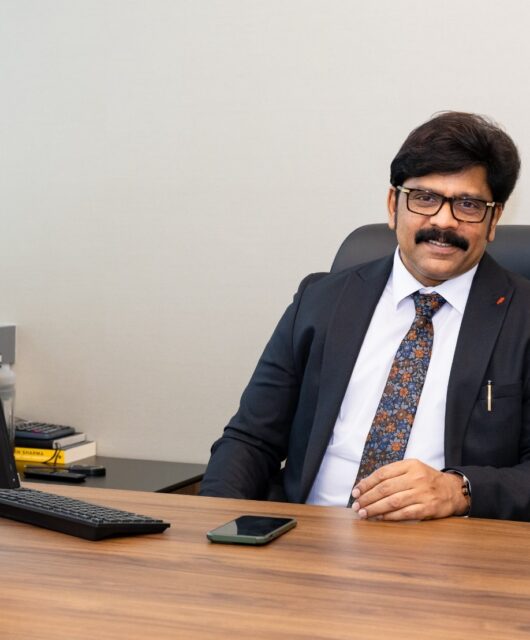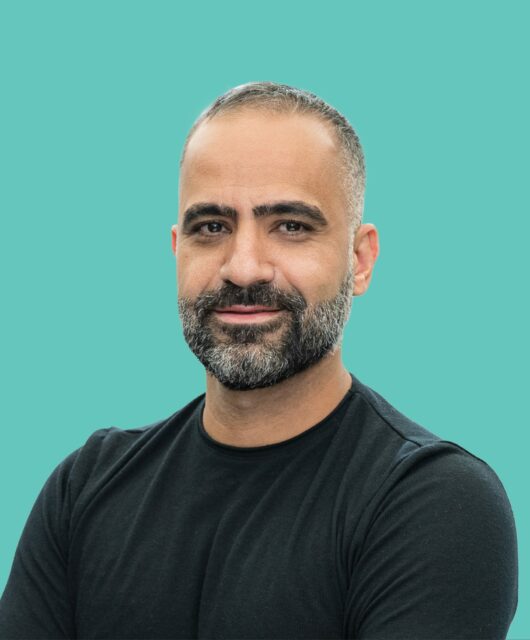 Andy Boutle, Head of Digital Construction at ALEC talks about digitalisation, fantastic software and tools, and ALEC’s drive towards data standardisation
Andy Boutle, Head of Digital Construction at ALEC talks about digitalisation, fantastic software and tools, and ALEC’s drive towards data standardisation
Every construction firm today would agree that digitalisation is key, but has this recognition translated to an on-ground reality? How would you assess the regional construction industry in this regard?
A: There is no doubt that digital transformation is a hot topic in the boardrooms of construction firms. But while digital technologies — ranging from Building Information Modelling (BIM) and Augmented/Virtual Reality, to robotics, drones, digital twins and cloud software — are heralding a new era of possibilities and efficiencies for the global construction sector, there has generally been a lag in adoption of these technologies in the region. This is largely because there remains trepidation in the region due to the steep learning curve and challenges around integration between systems and deciding what investments will yield maximum positive impact.
That said, we see that the regional construction industry has done well in its adoption of digital technologies like BIM, IoT, and AI. However, despite these advancements, there is still room for further development and alignment with international standards. For example, there is a need for the implementation of information management using BIM to mature to beyond ‘BIM Level 2’ to follow the ISO 19650 series, from project delivery through to asset operation. This will help to facilitate better collaboration and data sharing. There is also a need for more training and education programs to ensure that the workforce is equipped with the necessary understanding of new processes underpinned by digital skills.
Q: What are the factors promoting the adoption of digital technologies in the region?
A: Analysis by McKinsey Global Institute (MGI) shows that investing in technology and innovation is one of the key factors in boosting the construction sector’s productivity by up to 60%. Such productivity gains are the need of the hour for the industry which is presently confronted with several challenges – skills and labour shortages, productivity issues, attitudes towards change, outdated procurement models, lack of transparency and many more. The digitalisation of the section will undoubtedly help solve, if not at least simplify many of these challenges.
Of course, this can neither happen overnight, nor could it be solved by a single organisation independently. A consistent maturity of the broader sector will be needed, including new contract models and procurement routes.
Q: ALEC has always prided itself on being at the forefront of innovation in the industry. Could you comment on the present level of maturity of digital transformation in your organisation?
Having successfully leveraged the latest technologies on several projects we have now been directing our digital transformation inwards. This involves streamlining our processes through digital technologies, tackling interoperability, standardising the information (data) layer, and integrating solutions where required. In doing so, we will inevitably promote technology adoption among our clients and partners, leading to a digital-first mindset across the industry that advances the sector towards greater efficiency, quality, and sustainability.
For example, having successfully achieved the BSI Kitemark ISO 19650 certification for information management using BIM, we are now turning our attention to other areas where we can leverage digital solutions to enhance operations. We are currently deploying a new Enterprise Resource Planning (ERP) system that will digitalise our internal processes to enhance business intelligence through analytics and reporting.
You’ve mentioned ALEC’s drive towards data standardisation. Could you share insight into what the actual solutions are that makes this possible?
A: We have brought two significant technologies into our software stack as part of a standardisation/refinement initiative. The first is Revizto, a collaboration technology which connects 2D, 3D and coordination issue management. Given the size and complexity of the projects that ALEC delivers, this has proved to be ‘best in class’ for these capabilities.
We have also been busy implementing Morta, a cloud-based database for developing online, dynamic resources (documentation) to act as an information hub, and single source of truth on our projects. All of our ISO 19650-2 aligned templates are built in Morta, and we can start to automate processes such as connecting information delivery plans to Common Data Environment (CDE) solutions to monitor/track and report. Morta is also impressively scalable and I’m working with some of our other departments to explore how we could extend its benefits to their operations as well.
Are there any particular software solutions or tools that have caught your attention?
ALEC uses Synchro for construction simulation, but are currently evaluating Fuzor which looks like a really good alternative. Its animation functionality means you can almost use it for work-winning simulations and as a proper sequencing tool for construction too.
And while I’ve just mentioned it, I believe it’s worth mentioning again – Morta. We’ve built all our ISO 19650 resources using Morta’s online platform for tables and documents rather than using the traditional Word and Excel. The deeper we dive into it, the better it is. It is proving to be a really powerful tool for us, and is now helping to digitise a number back office and project related processes that aren’t already taken care of in our other systems.
What does the digital innovation roadmap for ALEC look like in the year ahead?
A: The fruition of our digital vision would be the seamless interconnectivity of best-in-class digital solutions and systems such that all data is fluidly available across our enterprise. For example, an initiative we currently have underway at ALEC is to generate real-time progress updates in our project models – made possible through the integration of technologies such as HoloBuilder, laser scans that produce point clouds for Systems Under Test (SUT), and traditional manual data recording.
We will also look to leverage the latest technologies in a meaningful way. As an example, while some may imagine AI to be a sort of all-encompassing solution to critical decision making, at ALEC, we are taking a more practical approach. Our intention is to leverage AI to increase efficiency by automating time-consuming, repetitive processes so our qualified professionals can win time back to focus on high-value tasks.
Ultimately, the focus of our digital transformation efforts links back to our mission of delivering the greatest value possible to our clients.







